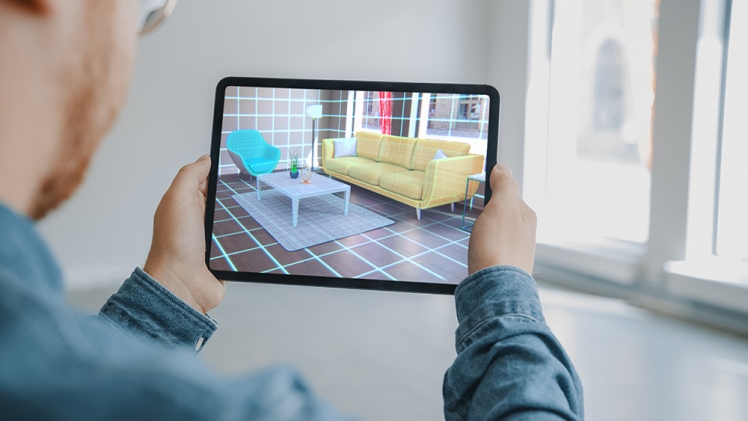Augmented reality (AR) is the insertion of virtual elements into a real environment. One of the best-known examples is the app “Pokémon Go,” in which the virtual monsters simply insert themselves into the already existing environment. In German, this is sometimes also referred to as “augmented reality.” This happens via screen or by means of suitable glasses. But far be it from anyone who thinks that only the games industry is taking advantage of this. In the warehousing and logistics industry, for example, spare parts are specifically searched for in this way and the employee receives additional information about an object in question. The technology is anything but complicated. But it is not only the visual sense that is addressed; it is also possible to display interactive audio files. In the meantime, almost every new mobile device is capable of displaying augmented reality.
What is the difference between Augmented Reality and Virtual Reality?
Virtual Reality shows a completely artificial environment. Examples of this are computer games played using glasses. The user is then completely immersed in a virtual world and physical reality is completely hidden. However, virtual reality is also used for training in companies or in quality management. Hybrid reality” is a term used to describe hybrid forms of the first two. One example is the Hololens from Microsoft, a holographic computer. Even when it comes to simulations, physical reality and the virtual world are linked in this way.
Potentials of augmented reality applications
Spatial computing represents one area of application. It refers to interactions between people and machines. Overall, however, this concept applies to a large number of technologies. In the medical field, for example, it is used to track the course of a disease. Car-sharing apps with location marking also benefit from it.
In airplanes, AR technology helps track down locations for wiring. At the same time, the error rate is significantly reduced. The military also has a wide range of potential applications, such as outdoor navigation.
In the field of online marketing, AR and spatial computing are opening up completely new possibilities for interaction in order to display personalized advertising or additional information about products.
In the meantime, there are even AR browsers that make it possible to display additional information via the integrated camera. Or the location is determined for this purpose by GPS.
Last but not least, augmented reality plays a role in search engine optimization (SEO) that should not be underestimated. This is because many services and functions here are location-based. If customers want to share information and experience about a particular store online, they can make their opinion known via AR applications.
With mobile devices, even tourists who are unfamiliar with a particular location can have interesting museums or cultural events displayed. Or the objects in the museum only become visible through the use of AR. This creates additional excitement and effects.
What challenges does augmented reality face?
One of the challenges is undoubtedly the issue of data protection. Through the precise location of the user, sensitive data comes into circulation. Operators also gain insight into private areas through the camera. A well-known representative of AR for this is Google Glass. For companies, this creates problems of its own kind. Nevertheless, the virtual world will increasingly permeate our everyday lives. Consumption and communication are likely to change significantly as a result. First, however, a broader public must be open to it, because anyone who fears AR from the outset is unlikely to use it.





